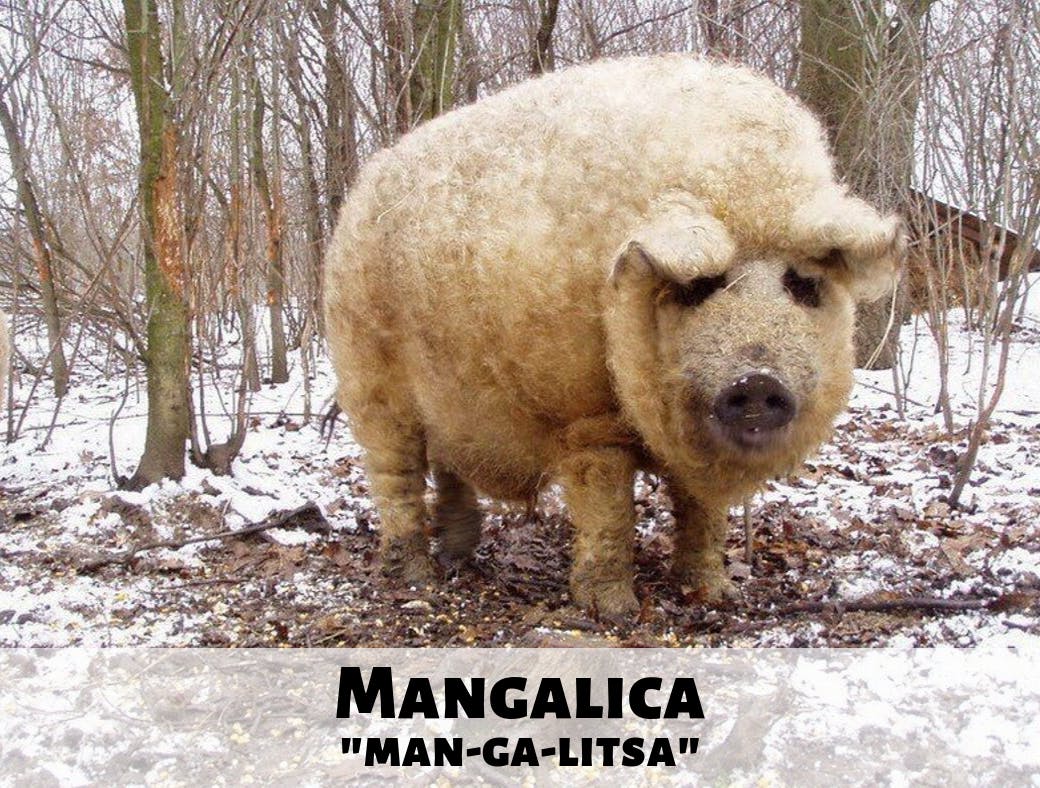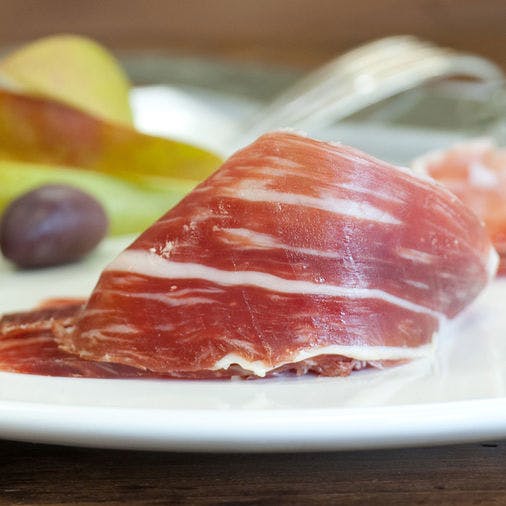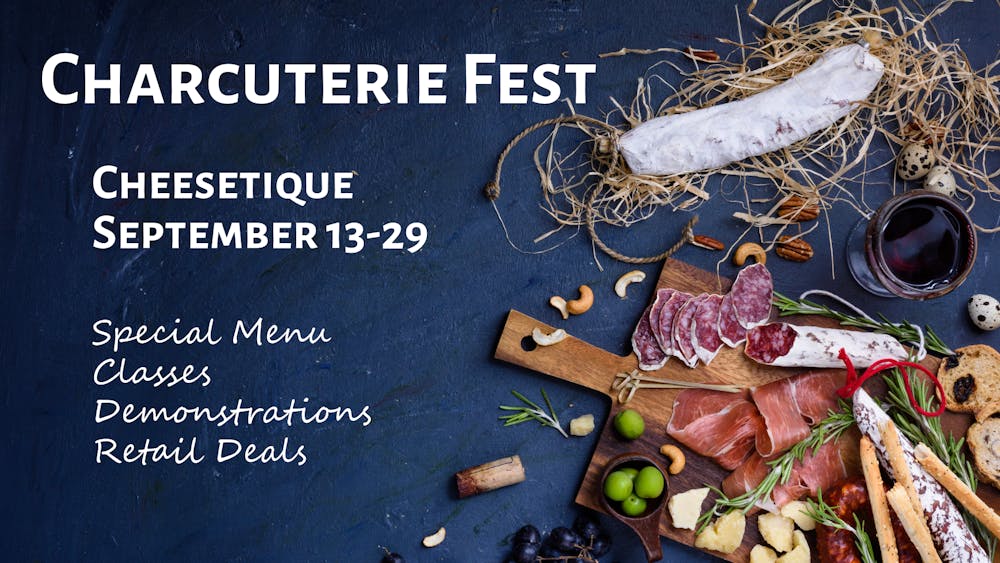Mangalica: The Whole Hog

The story of the Mangalica (pronounced "man-ga-litsa") is one of history, industry, and recovery. As with so many heritage breeds, which fell out of favor with the advent of industrial farming, the Mangalica is making a major comeback, thanks to the tireless efforts of a Hungarian geneticist and dedicated farmers who would not let these piggies perish. Thank goodness, because this "Kobe beef of pork" is a thing to behold—and is a perfect illustration of the concept, "eat them to save them."
Wait—is that a pig or a sheep? Or some sort of hybrid sheepig? The fluffy coat covering this cold-weather critter is proof that the Mangalica evolved to live outdoors. It is a breed that needs lots of room to roam and lots of high-nutrient foods to eat. Sadly, these very characteristics are what led to its near-extinction.

Historically, the Mangalica was considered a "lard pig" and was highly prized. It took a lot of time and energy to raise them, but their super-light, easily-melting lard was well worth it. In the mid-1800's, however, the world made a massive shift toward industrial farming. Sure, this yielded more food for more people at lower prices, but it also created livestock environments in which the free-roaming Mangalica failed to thrive. To top it off, fatty Mangalica pigs grow slower, produce less lean meat, and have fewer piglets than industrial-scale breeds. Then, in the mid-1900's, with the proliferation of vegetable shortenings and other hydrogenated fats, the use of lard all but disappeared.
The result? Farmers simply stopped breeding Mangalica—and by the 1990's, they were nearly extinct, with only 198 pigs left in all of Hungary.
Luckily, this is when a Hungarian geneticist stepped in to save these special creatures. Cooperatives were formed all over Hungary to begin raising Mangalica in the traditional way. Over 20 years, the Mangalica reached a stable population, and are now raised all over the globe (even in the US). Savvy chefs worldwide are returning to the use of lard because nothing tastes or cooks quite like it—even its scientific reputation is being revisited.
You can find Mangalica in every form imaginable, but my favorite is the hard-to-find ham, aged over three years. Yes, THREE YEARS! (This is an extra benefit of the high fat content.) The ham is moist, tender, rich, and complex in flavor. Also, it is especially high in omega-3 fatty acids and natural antioxidants. Could it be one of the world's perfect foods? Yes. And you can find it at Cheesetique :)

Come experience Mangalica and a vast assortment of unique charcuterie during Cheesetique's Charcuterie Fest!

